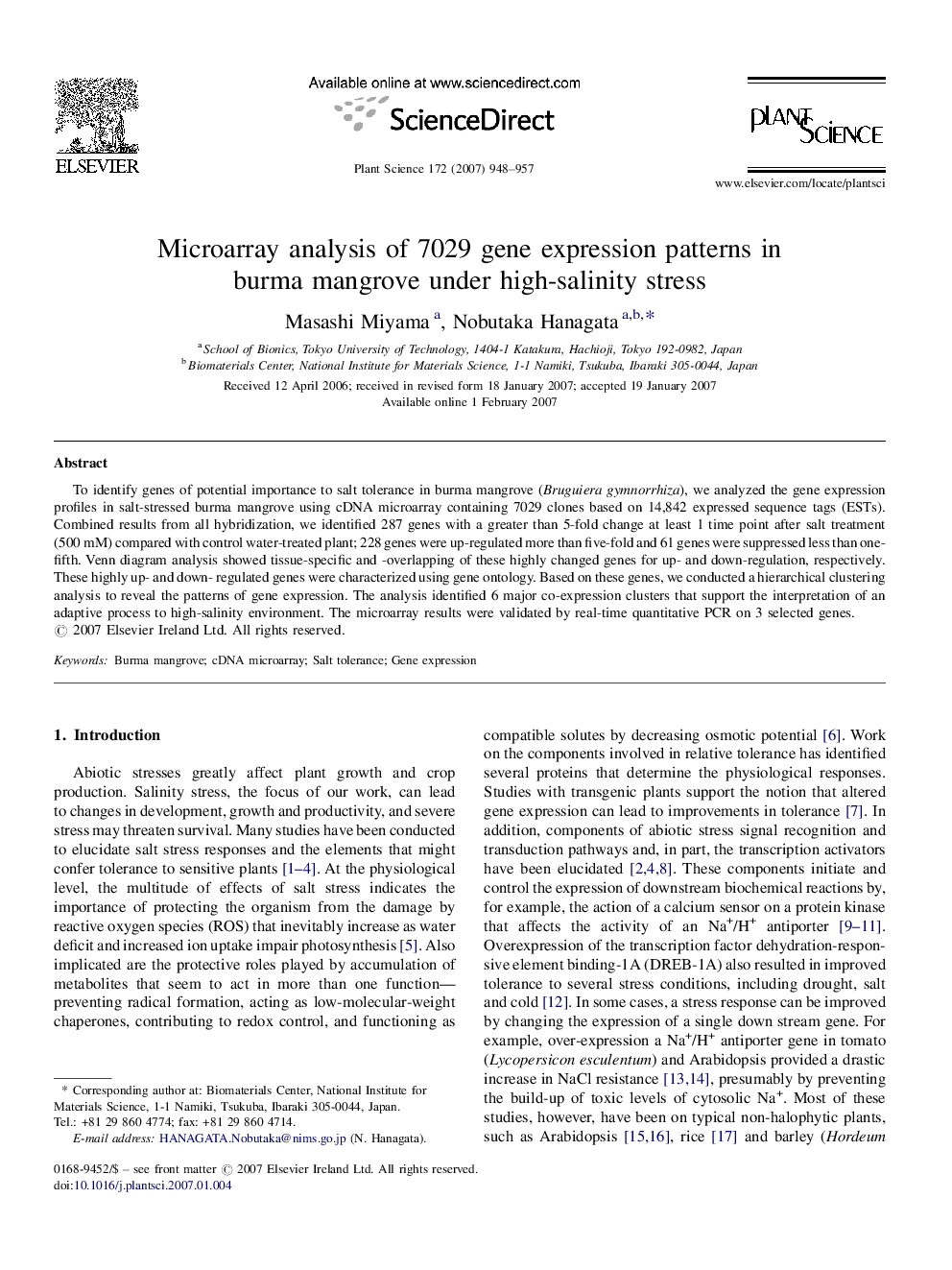| Article ID | Journal | Published Year | Pages | File Type |
|---|---|---|---|---|
| 2018059 | Plant Science | 2007 | 10 Pages |
Abstract
To identify genes of potential importance to salt tolerance in burma mangrove (Bruguiera gymnorrhiza), we analyzed the gene expression profiles in salt-stressed burma mangrove using cDNA microarray containing 7029 clones based on 14,842 expressed sequence tags (ESTs). Combined results from all hybridization, we identified 287 genes with a greater than 5-fold change at least 1 time point after salt treatment (500Â mM) compared with control water-treated plant; 228 genes were up-regulated more than five-fold and 61 genes were suppressed less than one-fifth. Venn diagram analysis showed tissue-specific and -overlapping of these highly changed genes for up- and down-regulation, respectively. These highly up- and down- regulated genes were characterized using gene ontology. Based on these genes, we conducted a hierarchical clustering analysis to reveal the patterns of gene expression. The analysis identified 6 major co-expression clusters that support the interpretation of an adaptive process to high-salinity environment. The microarray results were validated by real-time quantitative PCR on 3 selected genes.
Related Topics
Life Sciences
Agricultural and Biological Sciences
Plant Science
Authors
Masashi Miyama, Nobutaka Hanagata,
